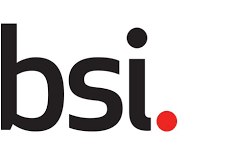Proposal: Additive manufacturing — General Principles — Framework for the Implementation of a Level System for temporarily self-sufficient systems
Please visit: ISO/ASTM PWI 52966
Comment period end date: 07/06/2024
Scope
This document defines a standardized framework for implementing a level system for temporarily self sufficient systems in additive manufacturing. It defines principles, criteria, and provides guidance for categorizing additive manufacturing processes and technologies into different levels to support self sufficient systems such as ships, oilrigs and assembly teams in the field or remote research stations.
It aims to provide clarity and consistency for non-AM-experts dealing with logistical support of self sufficient systems.
This document is applicable to industries, military institutions, research institutions, and regulatory bodies involved in additive manufacturing, facilitating interoperability and harmonization of practices across different stakeholders.
Purpose
The introduction of additive manufacturing (AM) in the production of parts for self-sufficient systems has opened new possibilities. However, the limited resources within these systems pose challenges for its implementations. To maintain high levels of self-sufficiency and operational readiness while increasing resilience, a supporting framework is necessary. In response to this need, this document has been developed.
Therefore, this document not only addresses the unique requirements of additive manufacturing in self sufficient systems but also facilitates framework-to-framework support. Ships equipped with Level 2 AM capabilities can support those with Level 1 AM or no capabilities from e.g., different shipping companies.
By implanting this standardized framework, collaboration and assistance between different systems become easier, enabling the exchange of resources, expertise, and parts productions. This fosters a network of support, enhancing overall operational readiness and effectiveness of self-sufficient systems like in the maritime domain.
Benefits of the Standardized Framework are:
enhanced interoperability and collaboration
interoperable data formats
certification and quality assurance
The standardized framework not only facilitates additive manufacturing but also fosters a cohesive AM ecosystem. It does so by promoting interoperability, collaboration, and efficiency across diverse self sufficient systems, thereby contributing significantly to overall supply chain resilience, particularly in times of uncertainty or crisis.
If you have any comment or need more information, please contact Sami Ortiz at [email protected]

